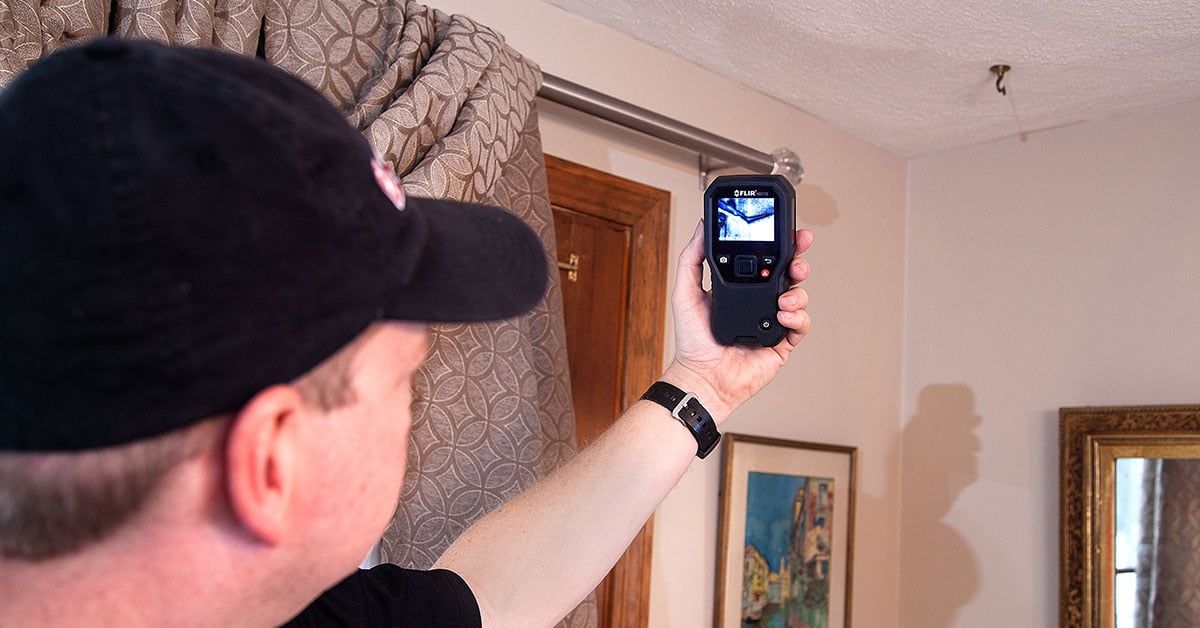Guide To Water Leak Detection In The House
Guide To Water Leak Detection In The House
Blog Article
In this article below you will discover lots of superb answers concerning Detecting hidden plumbing leaks.

Early discovery of dripping water lines can reduce a prospective calamity. Some small water leakages might not be noticeable.
1. Analyze the Water Meter
Every home has a water meter. Examining it is a surefire manner in which aids you discover leaks. For starters, turn off all the water sources. Guarantee no person will certainly flush, utilize the faucet, shower, run the cleaning equipment or dish washer. From there, go to the meter and watch if it will transform. Considering that no person is using it, there should be no movements. If it moves, that indicates a fast-moving leak. Furthermore, if you find no changes, wait an hour or more as well as inspect back once again. This suggests you might have a slow-moving leakage that could also be underground.
2. Examine Water Consumption
Analyze your water expenses and track your water consumption. As the one paying it, you need to notice if there are any discrepancies. If you identify sudden changes, regardless of your intake being the same, it suggests that you have leaks in your plumbing system. Bear in mind, your water costs must drop under the same array every month. An abrupt spike in your costs indicates a fast-moving leak.
A consistent increase every month, also with the exact same behaviors, shows you have a sluggish leak that's additionally gradually escalating. Call a plumber to extensively inspect your home, specifically if you feel a cozy location on your flooring with piping underneath.
3. Do a Food Coloring Examination
When it concerns water consumption, 30% comes from toilets. Examination to see if they are running properly. Drop flecks of food shade in the container and wait 10 mins. There's a leakage in between the tank and also dish if the shade in some way infiltrates your dish during that time without flushing.
4. Asses Outside Lines
Don't fail to remember to examine your exterior water lines too. Examination spigots by affixing a yard hose pipe. Needs to water leak out of the connection, you have a loose rubber gasket. Change this and also guarantee all connections are limited. If you've obtained a lawn sprinkler, it will help get it properly examined and kept each year. One tiny leak can throw away tons of water as well as spike your water bill.
5. Examine as well as Analyze the Scenario
Property owners ought to make it a routine to examine under the sink counters and also also inside cabinets for any type of bad odor or mold growth. These two warnings show a leak so timely focus is called for. Doing routine inspections, also bi-annually, can conserve you from a significant issue.
Examine for discolorations and also damaging as most home appliances and pipelines have a life span. If you think dripping water lines in your plumbing system, do not wait for it to rise.
Early detection of leaking water lines can alleviate a possible calamity. Some tiny water leakages may not be noticeable. Inspecting it is a surefire means that assists you find leakages. One little leak can throw away loads of water and surge your water costs.
If you suspect leaking water lines in your plumbing system, don't wait for it to rise.
WARNING SIGNS OF WATER LEAKAGE BEHIND THE WALL
PERSISTENT MUSTY ODORS
As water slowly drips from a leaky pipe inside the wall, flooring and sheetrock stay damp and develop an odor similar to wet cardboard. It generates a musty smell that can help you find hidden leaks.
MOLD IN UNUSUAL AREAS
Mold usually grows in wet areas like kitchens, baths and laundry rooms. If you spot the stuff on walls or baseboards in other rooms of the house, it’s a good indicator of undetected water leaks.
STAINS THAT GROW
When mold thrives around a leaky pipe, it sometimes takes hold on the inside surface of the affected wall. A growing stain on otherwise clean sheetrock is often your sign of a hidden plumbing problem.
PEELING OR BUBBLING WALLPAPER / PAINT
This clue is easy to miss in rooms that don’t get much use. When you see wallpaper separating along seams or paint bubbling or flaking off the wall, blame sheetrock that stays wet because of an undetected leak.
BUCKLED CEILINGS AND STAINED FLOORS
If ceilings or floors in bathrooms, kitchens or laundry areas develop structural problems, don’t rule out constant damp inside the walls. Wet sheetrock can affect adjacent framing, flooring and ceilings.
https://www.servicemasterbyzaba.com/blog/how-to-detect-water-leakage-in-walls/

As a reader about Finding hidden leaks, I was thinking sharing that chunk was mandatory. Are you aware of anybody else who is occupied with Locating water leaks? Be sure promote it. Thanks a lot for going through it.
Report this page